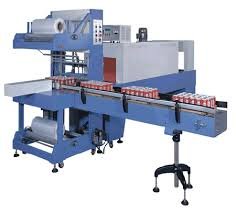SOP for Cleaning of Strip Packing Machine

Standard Operating Procedure (SOP)
Here’s a Standard Operating Procedure (SOP) for the cleaning of a Strip Packing Machine, commonly used in pharmaceutical or food industries.
1. Objective
To establish a standardized procedure for the cleaning of the strip packing machine to ensure that it is free from residues, prevent contamination, and comply with GMP guidelines.
2. Scope
This procedure applies to all strip packing machines used in packaging oral solid dosage forms (such as tablets and capsules) in the production department.
3. Responsibility
-
Operator / Technician: Perform the cleaning of the machine in accordance with this SOP.
-
Production Supervisor: Supervise the cleaning procedure and ensure compliance.
-
QA/QC Personnel: Verify that the machine is clean and meets quality standards after cleaning.
4. Materials and Equipment Required
-
Purified Water
-
Approved cleaning detergent
-
Soft brushes (for hard-to-reach areas)
-
Lint-free cloths
-
Vacuum cleaner
-
Compressed air (if available)
-
 PPE (gloves, goggles, mask, apron)
PPE (gloves, goggles, mask, apron)
-
-
Cleaning logbook
5. Procedure
5.1 Pre-Cleaning Steps
-
Power Off the Machine:
Ensure the machine is switched off and disconnected from the electrical supply.
Place a “Under Cleaning” tag on the equipment. -
Wear PPE:
Ensure proper personal protective equipment is worn. -
Remove Residual Product:
-
Manually remove any remaining product, such as tablets or capsules, from the hopper, conveyors, and other accessible parts.
-
Empty the waste collection containers.
-
-
Disassemble Removable Parts:
Disassemble any parts that can be removed, such as the sealing jaws, film roll holder, and guide rails, as per the equipment manual.
5.2 Cleaning Procedure
-
Clean the External Surfaces:
-
Wipe the external surfaces of the machine, including the film roller area, using a damp cloth with an approved cleaning solution.
-
Dry all surfaces with a lint-free cloth.
-
-
Clean the Product Contact Parts:
-
Use soft brushes to clean the hopper, sealing jaws, product guides, and film path areas to remove any product residues.
-
Wipe down with a damp cloth soaked in the cleaning solution. Ensure all residues are removed.
-
-
Clean the Film Roll Area:
-
Clean the film roll holder and surrounding areas where the packaging film might have residues. Use a vacuum cleaner if necessary to remove any loose particles.
-
Wipe with a damp cloth and ensure the area is dry before reassembling.
-
-
Rinse and Dry:
-
Use purified water to rinse all the cleaned surfaces, ensuring that no detergent residue remains.
-
Dry the parts thoroughly using lint-free cloths or compressed air.
-
5.3 Reassembly and Post-Cleaning
-
Reassemble the Machine:
-
Once all parts are dry, reassemble the machine as per the equipment manual.
-
-
Labeling:
-
Affix a “Cleaned” label with the date, time, and operator’s initials.
-
-
Record Cleaning Activity:
-
Document all cleaning actions, including the date, time, and observations, in the cleaning logbook.
-
6. Post-Cleaning Activities
-
QA Inspection:
-
Notify QA for an inspection to verify that the machine is cleaned and ready for the next batch. Ensure that the machine meets cleanliness standards.
-
-
Function Check:
-
Conduct a test run (dry run) of the machine, ensuring that all components are functioning correctly.
-
7. Precautions
-
Do not use excessive water on electrical components.
-
Avoid abrasive materials that could damage the machine surfaces.
-
Ensure all parts are fully dry before reassembly to avoid product contamination.
-
Handle the sealing jaws carefully to avoid damage.
🎓 Discover one of the best Pharmaceutical Production courses available — click below to explore the course that’s shaping future Production skills.

